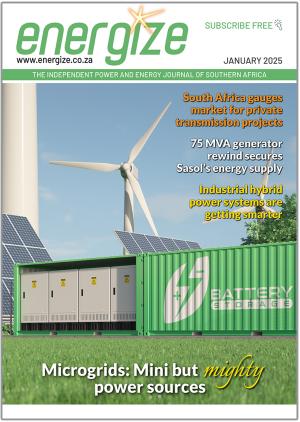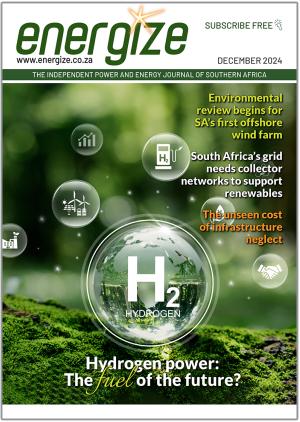The National Transmission Company South Africa (NTCSA) is pressing ahead with its Transmission Development Plan but progress remains slow due to supply chain constraints, land acquisition challenges and the ambitious goal of constructing 14 000 km of transmission lines over the next decade.
NTCSA executives outlined priority areas, including grid expansion to renewable energy zones, investment approvals and measures to fast-track critical infrastructure projects at the recent Energy Outlook 2025 webinar hosted by Creamer Media.
“The question around transmission capacity is global,” Segomoco Scheppers, Chief Executive Officer (CEO) of the NTCSA, said. “Every grid, by design, does not have unlimited capacity.” Grids are structured around a country’s energy resources. South Africa’s grid was built around coal-fired power generation and, historically, Eskom’s dual role in managing transmission and generation led to competing priorities with insufficient focus on grid expansion, he said. “I think the ability to focus now will stand us in good stead going forward.”
Land and supply chain challenges
Grid constraints over the past two years have hampered renewable energy development, preventing the country from meeting its Integrated Resource Plan 2019 renewable energy targets and megawatt allocations under the public procurement programme, said Niveshen Govender, CEO of the South African Wind Energy Association. “For wind energy, this could be characterised as a threat to energy security and economic growth.”
This challenge is becoming more pertinent as the shift to low-carbon energy accelerates, said Mohamed Hoosen, Managing Director of Renewables: Asia, Middle East and Africa at ENGIE. “The transition is going forward at pace. Logistically, that means areas with high renewable energy potential – such as the Northern Cape, Western Cape and Eastern Cape – are facing grid constraints that are limiting additional generation capacity.”
The Independent Power Producer (IPP) Office has first-hand experience of these bottlenecks as grid constraints recently prevented the appointment of two wind energy projects, according to Bernard Magoro, Head of the IPP Office. He said the Electricity Regulation Amendment Act of 2024, which came into effect on January 1 this year, is a step towards addressing these issues.
In addition to the Act, South Africa should establish a parallel industrialisation programme to manufacture critical components such as transformers and insulators locally, reducing reliance on imports and alleviating supply shortages, said Mpho Mokwele, Group Executive for the Transaction Division of the Development Bank of Southern Africa.
Fast-tracking substations and key corridors
Scheppers provided an update on the NTCSA’s work to accelerate grid expansion, focusing on two major initiatives:
- Looking at existing substations and assessing their ability to expand with more transformers. “This has been done and we are very clear on what is possible and where,” he said.
- Identifying key transmission corridors that require fast-tracking to unlock additional capacity.
To expedite the process, government has introduced measures to streamline contractor appointments, engineer recruitment and transformer procurement. However, land acquisition remains a challenge, prompting the NTCSA to request government intervention to expropriate land for transmission expansion.
“The landowner is compensated at market-related rates,” Scheppers said.
The NTCSA has been waiting keenly for the National Energy Regulator of South Africa (NERSA) to decide on Eskom’s proposed Multi-Year Price Determination (MYPD6) to indicate the company’s investment capacity and how quickly infrastructure can be rolled out, Scheppers said.
Currently, the NTCSA has about 950 km of transmission lines in execution phase – either in procurement or under construction. Since the webinar, NERSA has approved the NTCSA’s full capital expenditure request, acknowledging the urgent need for upfront investment in transmission infrastructure. However, the approval comes with the condition that the regulator closely monitors the NTCSA’s expenditure to ensure accountability.















